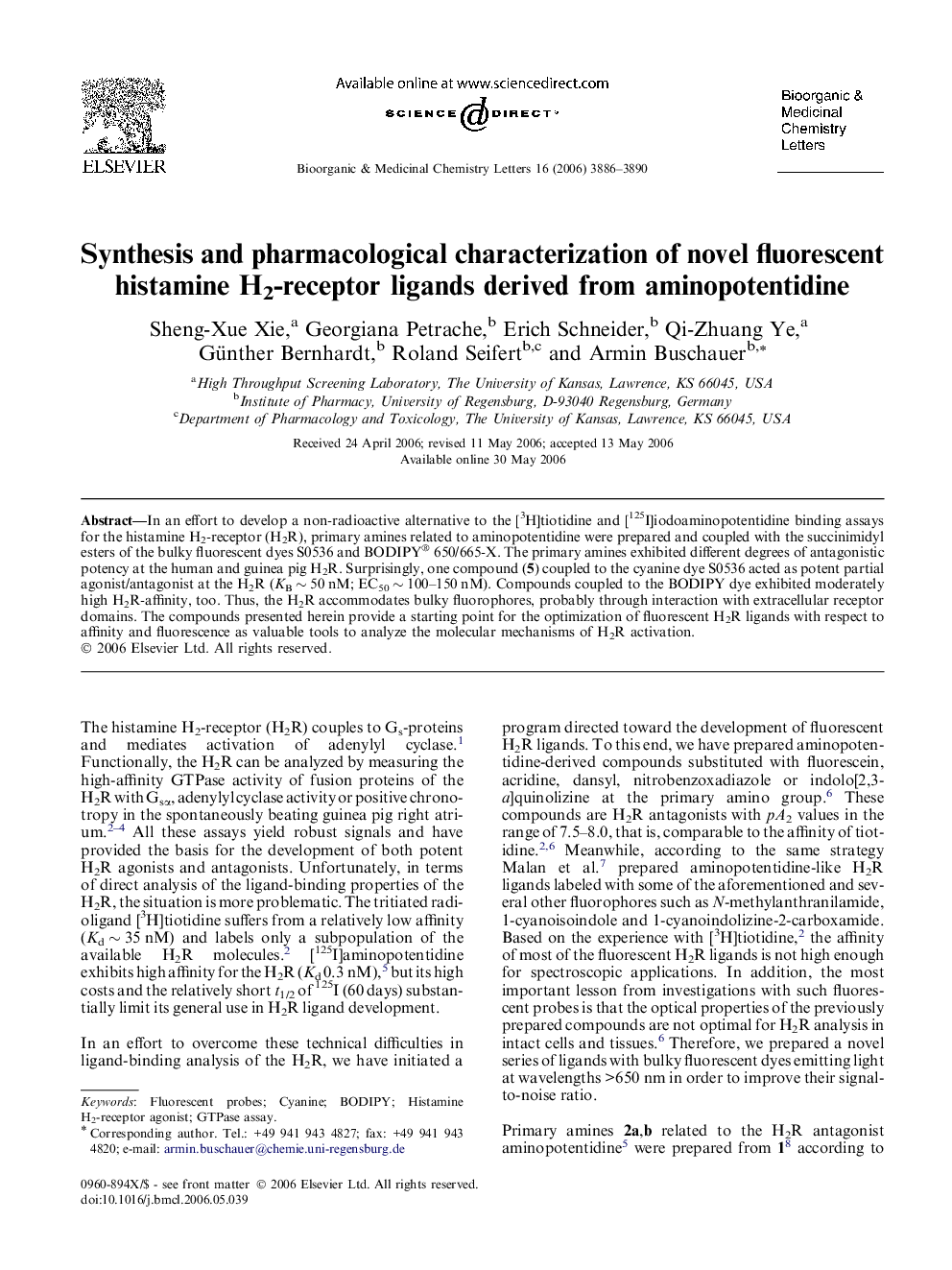| Article ID | Journal | Published Year | Pages | File Type |
|---|---|---|---|---|
| 1376963 | Bioorganic & Medicinal Chemistry Letters | 2006 | 5 Pages |
In an effort to develop a non-radioactive alternative to the [3H]tiotidine and [125I]iodoaminopotentidine binding assays for the histamine H2-receptor (H2R), primary amines related to aminopotentidine were prepared and coupled with the succinimidyl esters of the bulky fluorescent dyes S0536 and BODIPY® 650/665-X. The primary amines exhibited different degrees of antagonistic potency at the human and guinea pig H2R. Surprisingly, one compound (5) coupled to the cyanine dye S0536 acted as potent partial agonist/antagonist at the H2R (KB ∼ 50 nM; EC50 ∼ 100–150 nM). Compounds coupled to the BODIPY dye exhibited moderately high H2R-affinity, too. Thus, the H2R accommodates bulky fluorophores, probably through interaction with extracellular receptor domains. The compounds presented herein provide a starting point for the optimization of fluorescent H2R ligands with respect to affinity and fluorescence as valuable tools to analyze the molecular mechanisms of H2R activation.
Graphical abstractThe title compounds were prepared from potentidine-like building blocks by labeling with BODIPY®650/665-X or the cyanine dye S0536, respectively. Surprisingly, compound 5 turned out to be a relatively potent histamine H2 receptor partial agonist (KB ∼ 50 nM; EC50 ∼ 100–150 nM).Figure optionsDownload full-size imageDownload as PowerPoint slide
